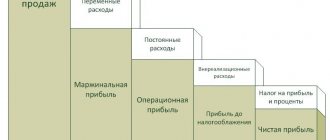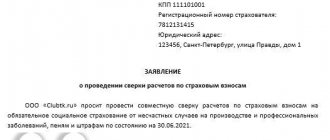Criteria for classifying an enterprise as a budget organization
In addition to the fact that a budgetary organization is essentially established by the state, there are a number of mandatory features for the final classification:
- the organization was created to perform certain tasks (and these tasks were established by the founder - a government agency);
- the state founder regularly finances the organization to fulfill its assigned tasks - government tasks (financing is allocated from the budget - hence the name “state employees”);
- due to the criteria set out above, the organization is recognized as non-profit (with the application of rules and regulations relating to non-profit organizations in its activities);
- like other non-profit organizations, the organization can carry out operations that generate income and entail expenses in addition to budget funding.
The following should not be confused with budgetary organizations (institutions):
- autonomous institutions;
- government institutions
The main differences are presented in the table:
| Criterion | Autonomous institution | State-financed organization | State institution |
| Financial support | In the form of subsidies in accordance with state assignments and for the maintenance of property | Subsidies: • to fulfill government tasks; • for the maintenance of property; • for other purposes. Budget funds: • to fulfill public obligations to individuals; • to carry out mandatory activities | According to budget estimate |
| Income-generating activities | Revenues go to the organization | Revenues go to the organization | Revenues are credited to the budget |
| Opening accounts | Accounts with credit institutions | Only in the Federal Treasury | Only in the Federal Treasury |
| Chart of accounts | “Regular” chart of accounts and instructions, approved. by order of the Ministry of Finance of the Russian Federation dated October 31, 2000 No. 94n | Chart of accounts for budgetary institutions and instructions for it, approved. by order of the Ministry of Finance of the Russian Federation dated December 16, 2010 No. 174n | Chart of accounts for government agencies and instructions for it, approved. by order of the Ministry of Finance of the Russian Federation dated December 6, 2010 No. 162n |
| Reporting | Budgetary institutions must publish their reports (for example, through a website on the Internet) | ||
Income-generating activities
The right of budgetary and autonomous institutions to carry out income-generating activities is enshrined in paragraph 2 of Art.
24 and paragraph 4 of Art. 9.2 of the Federal Law of January 12, 1996 No. 7-FZ “On Non-Profit Organizations” (hereinafter referred to as the Law on Non-Profit Organizations). A reference to this right is also contained in paragraph 3 of Art. 161 BC RF. The Letter of the Ministry of Finance dated October 22, 2013 No. 12-08-06/44036 “On comments (comprehensive recommendations) on issues related to the implementation of the provisions of the Federal Law dated May 8, 2010 No. 83-FZ” states that income-generating activities mean activities related to provision of services (performance of work) for a fee.
Income-generating activities also include the acquisition and sale of securities, property and non-property rights, participation (in cases provided for by the legislation of the Russian Federation) in business companies and participation in limited partnerships as an investor.
An important condition for such activities is compliance with the goals of creating a budgetary or autonomous institution. The goals of creating a budgetary institution must be reflected in its charter. Once the goals are determined, on their basis the types of activities of the institution are drawn up and approved - they must also be listed in the charter.
Particular attention should be paid to the legality of the income-generating activities of a budgetary institution, and the following conditions must be met:
- the activity serves to achieve the goals for which the budgetary institution was created and corresponds to the goals specified in the charter;
- income-generating activities are provided for in the constituent documents of the budgetary institution.
The criterion by which it can be judged that income-generating activities serve to achieve the goals for which the institution was created is the fact that the owner (founder) approved the charter. Indeed, in this case, there is confirmation that the types of activities from the charter are fully consistent with the goals of creating a budgetary or autonomous institution.
Apart from the charter, there is no requirement to document a list of income-generating activities anywhere. However, for tax accounting purposes, it is recommended to reflect all paid services in the accounting policies of the institution.
It should be remembered
that according to the law, a budgetary institution has the right to use profits received from income-generating activities, as well as property acquired from these funds, only for the purposes specified in the charter.
Regulatory regulation of accounting in budgetary organizations
As can be seen from the above comparative analysis, in terms of the degree of connection to state regulation, the budgetary organizations we are considering are in the middle between state-owned and autonomous. Therefore, when keeping records, we are forced to rely on both the norms for private companies and the norms for those who receive budget funding.
When constructing an accounting model and creating an accounting policy, budgetary organizations rely on the following legal acts:
- Law of December 6, 2011 No. 402-FZ “On Accounting”;
- chart of accounts by order of the Ministry of Finance of the Russian Federation dated December 16, 2010 No. 174n;
- chart of accounts by order of the Ministry of Finance of the Russian Federation dated December 1, 2010 No. 157n in terms of reflecting turnover related to government financing;
- Order of the Ministry of Finance of the Russian Federation dated March 30, 2015 No. 52n “On primary documents of state-owned enterprises”;
- Order of the Ministry of Finance of Russia dated June 6, 2019 No. 85n “On budget classification”;
- provisions of the Budget Code of the Russian Federation.
Forms for primary documents, as well as accounting registers and reporting for public sector employees, can be found in ConsultantPlus. Get trial access to the system for free and go to the directory.
In addition, it should be said that budgetary organizations within the group itself are divided into several categories:
- administrators of budget revenues (for example, tax authorities or extra-budgetary funds) - while other activities of such institutions are strictly limited;
- institutions that are financed only by the budget (not engaged in any other income-generating activities for one reason or another);
- institutions with expanded capabilities - supported by state subsidies and at the same time receiving other income within the framework of their statutory activities (budgetary organizations of education, culture, healthcare, etc.).
Further in this material, the formation of financial results for organizations belonging to the third (and largest) group of public sector employees is discussed.
From November 21, 2020, the updated procedure for applying KOSGU is in effect. Some innovations will be introduced from 01/01/2021. Find out more about the innovations in the Review from ConsultantPlus experts. If you don't have access to the legal system, get a free trial online.
Types of paid services
Paid services (work) of budgetary and autonomous institutions can be divided into two groups:
- services (work) related to the main activities of the institution (these are the main paid services of the institution);
- services (works) not classified by the charter as the main types of activity (so-called “non-core” paid services).
The difference between basic services is that a budgetary and autonomous institution has the right to provide basic paid services in excess of the state (municipal) assignment. In a number of cases provided for by regulations, such services (work) may even be included in the state (municipal) task. However, this requires a direct reference in federal law.
For example,
Art. 46 of the Fundamentals of the Legislation of the Russian Federation on culture states that the founder of a cultural organization created in the form of a budgetary institution provides financial support for the activities of the budgetary institution related to the performance of work and the provision of services to the consumer in accordance with the tasks of the founder free of charge or partially for a fee.
Formation of financial results for public sector employees - general rules
With regard to the income and expenses of the public sector employees in question, the following principles apply:
- Income for accounting purposes includes all receipts into the organization, namely: receipts of budget subsidies;
- receipts of budget grants and similar targeted transfers;
IMPORTANT! Receipts from subsidies and grants are then excluded in tax registers for the purposes of calculating income tax (clause 1 of Article 251 of the Tax Code of the Russian Federation).
- income (receipts) from the sale of goods, works, services to third parties;
- income from the sale of goods, works, services to government agencies (for example, as part of the implementation of a government contract);
- other income that is classified as income from commercial activities (for example, received fines and penalties, results of revaluation of assets, etc.).
- employee salaries and mandatory contributions to funds;
Thus, as you can see, the formation of the financial result of a budgetary organization proceeds according to a pre-planned order, in accordance with the organization’s activity estimate approved by the founder.
The result of the activity of a budgetary organization, which is the subject of consideration in this article, is determined using the accounts of section 4 “Financial result” of the chart of accounts according to order No. 174n.
According to clause 148 of the instructions to order No. 174n (hereinafter referred to as the instructions), account 0 401 00 000 “Financial result of a business entity” is divided into grouping accounts:
- 0 401 10 000 “Income of the current financial year”;
- 0 401 20 000 “Expenditures of the current financial year”;
- 0 401 30 000 “Financial result of previous reporting periods”;
- 0 401 40 000 “Deferred income”;
- 0 401 50 000 “Future expenses”.
Account 0 401 10 000 “Revenue of the current financial year” takes into account income receipts that can be recognized during the year if 2 conditions are simultaneously met:
- the date of receipt of income (or the date of transfer of property rights) is determined;
- the amount of income can be estimated.
Income on account 0 401 10 000 is grouped into subaccounts depending on the types of income (in accordance with the organization’s income estimate):
- 0 401 10 120 “Income from property” - for income derived by an organization from its existing state property, not related to the transfer of ownership. A typical example is the rental of premises.
NOTE! A budget organization can carry out transactions with state property only if strict conditions are met, in particular, it may be necessary to obtain the consent of the owner (state entity). But if the deal is nevertheless concluded, the income relates to the organization’s own income and remains at its disposal.
The rules for generating accounting records according to the chart of accounts for public sector employees are standard. That is, income is reflected in the credit of the income account.
Wiring example:
Dt 0 205 21 560 (increase in accounts receivable for property income) Kt 0 401 10 120.
- 0 401 10 130 “Income from the provision of paid services” - most of the institutions under consideration provide services. Services provided for a fee in excess of the state assignment, for types of activities acceptable for a given public sector employee, are taken into account in this account.
- 0 401 10 140 “Income from forced withdrawal amounts” - forced withdrawal amounts mean punitive deductions from performers if they violate the terms of contracts with the institution. According to the clarifications of the Ministry of Finance of the Russian Federation, these receipts also relate to own income remaining at the disposal of the state employee (letter dated November 24, 2014 No. 02-06-10/59651).
- 0 401 10 170 “Income from transactions with assets” is used to account for income from property (assets) that did not go to the account 0 401 10 120 - from the sale of property (with the permission of the owner), from the capitalization of usable inventories, from the dismantling of property and so on.
- 0 401 10 171 “Income from revaluation of assets” - the account records all the results of revaluations, including exchange rate differences on debts and funds in foreign currencies.
- 0 401 10 180 “Other income” - the list of budgetary organizations is quite extensive. In particular, this includes (clause 150 of the instructions):
- subsidies for the implementation of government tasks;
- other targeted subsidies;
- budget investments;
- grants and similar income.
Account 0 401 20 000 “Expenses of the current financial year” records the expenses incurred (according to the estimate). The account also has grouping accounts with different coding:
- 0 401 20 210 “Expenses for wages and accruals for wage payments” - applied with further grouping by KOSGU (last 3 digits):
- 211 - expenses for regular wages;
- 212 - other payments and compensations;
- 213 - accruals to funds for salaries and other payments;
When the reporting year ends, it is necessary to close the income and expense accounts for this year. Account 0 401 30 000 “Financial result of previous reporting periods” is intended for these actions. The resulting balances on the income and disposal accounts are closed (written off) to the financial result calculation account. The final balance of 0 401 30 000 after all closings for the current year will give an idea of what the financial result of the organization is at the reporting date.
IMPORTANT! The complete procedure for closing the year by a budget organization with standard entries for 0 401 30 000 is presented in the instructions to order No. 157n. In addition to the above accounts, depending on the type of budgetary organization, closing transactions may be supplemented by writing off final balances on accounts of internal departmental settlements, settlements with a financial authority, etc. In addition, in the activities of budgetary organizations there is also such a thing as income and expenses related to future periods that must be taken into account when generating financial results. We should also not forget that transactions not related to payments for government assignments are subject to taxation, which also affects the final result - the net profit or loss of a budget organization.
How to pay income tax
After the adoption of the changes, the question arises: what then should institutions include in the tax base for income tax?
According to the direct interpretation of paragraphs. 33.1 clause 1 art. 251 of the Tax Code of the Russian Federation it follows that the tax base for this tax does not include funds
received from income-generating activities. What about property or other income received in kind?
So, according to Art. 250 of the Tax Code of the Russian Federation are recognized as non-operating income and the following income is taken into account when calculating income tax:
- clause 8 – property received free of charge (work, services) or property rights (except for the cases specified in clause 1 of Article 251 of the Tax Code of the Russian Federation. For example, property received by state and municipal institutions by decision of executive authorities of all levels (clause 8), or property received free of charge by state and municipal educational institutions for the conduct of their main activities (clause 22));
- clause 13 - the cost of materials or other property received during dismantling or disassembly during the liquidation of OSes being decommissioned (except for the cases provided for in clause 18, clause 1, article 251 of the Tax Code of the Russian Federation);
- clause 14 – property, work, services that were received as part of charitable activities, targeted revenues, targeted financing, other than budgetary funds, used for purposes other than their intended purpose;
- clause 20 – the cost of surplus inventories and other property that were identified as a result of the inventory.
According to the author, based on the direct interpretation of the norms of the Tax Code of the Russian Federation, since in the listed cases we are talking about receiving not cash, but non-financial assets (or rights to them), then in relation to the listed income, paragraphs. 33.1 clause 1 art. 251 of the Tax Code of the Russian Federation does not apply. That is, government agencies will continue to calculate taxes on such income.
Results
The financial result in a budgetary organization is formed according to the general rules of accounting, but using a separate chart of accounts and specific requirements formulated specifically for public sector employees. The basis for the correct formation of income and expenses is the approved budget of the public sector institution. The final financial result for the reporting period is formed by closing income and expense accounts to a specially designated account according to the budget chart of accounts.
More about the affected aspects of budget accounting:
- “Typical entries for budget accounting (examples)”;
- “Working chart of accounts for budget accounting for 2022 - 2021”.
Sources:
- Federal Law of December 6, 2011 No. 402-FZ
- Budget Code of the Russian Federation
- Order of the Ministry of Finance of Russia dated 06.06.2019 N 85n
You can find more complete information on the topic in ConsultantPlus. Free trial access to the system for 2 days.






